Which traditional restaurants near Yu Garden in Shanghai serve the finest meals? The Yu Garden area is a bustling commercial hub, brimming with local shops, restaurants, street vendors, shopping malls, and vibrant markets. It’s not only a fantastic spot to discover great deals but also to relish traditional Shanghainese cuisine. In this article, I am unveiling a selection of traditional restaurants near Yu Garden that have earned the locals’ stamp of approval.
The best traditional restaurants near Yu Garden
Restaurants near Yu Garden offer a delightful range of traditional Shanghainese cuisine, providing a glimpse into the rich tapestry of Shanghai’s traditional way of life. Behind each of these culinary establishments lies a unique story and a slice of captivating history.
- Huxin Pavilion (湖心亭茶楼), 257 Yu Yuan Rd. Shanghai (上海豫园路257号)
- Nanxiang Steamed Bun Restaurant (南翔馒头店), 85 Yu Yuan Rd. Shanghai (上海豫园路85号)
- Ningbo Tangtuan Shop(宁波汤团店), Yuyuan New Rd, (上海豫园老街104号)
- Lü Bo Lang (绿波廊), Yuyuan New Rd, Shanghai (上海文昌路10号)
- Chunfeng Songyue Lou(春风松月楼), 23 BaiLing Rd. Shanghai, China (百翎路23号)
- Shanghai Lao Fan Dian (上海老饭店), 242 Fuyou Rd. Shanghai (福佑路242号)
Huxin Pavilion (湖心亭茶楼)
Background
Huxin Pavilion, a venerable establishment near Yu Garden, stands as Shanghai’s oldest and most renowned tea house. Constructed in 1784, it transitioned into a teahouse in 1855. Nestled at the heart of the Zigzag Bridge (九曲桥) overlooking the lotus pond outside Yuyuan Garden, this historic tea house boasts a storied past, drawing esteemed political figures and global celebrities. Notably, it had the privilege of hosting Queen Elizabeth II, representing the city of Shanghai. Huxin Pavilion is a cherished relic of Shanghai’s heritage, welcoming visitors to relish in its rich history and tea traditions.
Specialties
Indulge in a classic Chinese-style afternoon tea at Huxin Pavilion, a charming experience. Explore a variety of renowned teas like West Lake Longjing, Anji White Tea, Oolong Tea, Qimen Black Tea, Biluochun, Pu’er Tea, and Taiwan Oolong. For the best atmosphere, head upstairs. Choose a comfortable spot, order a pot of premium tea, and take a leisurely break after visiting Yu Garden. Don’t miss out on the local tradition of pairing tea with delightful Dim Sum (点心) like small glutinous rice dumplings. Sometimes, a pot of tea comes with some local sweet and salty snacks to complement your tea time.
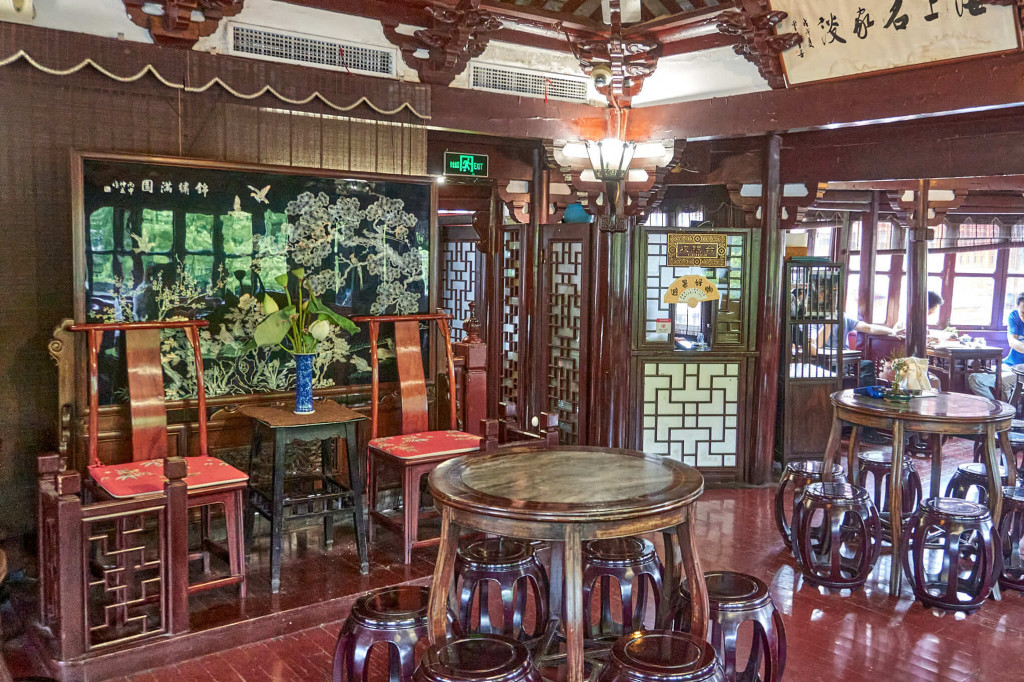
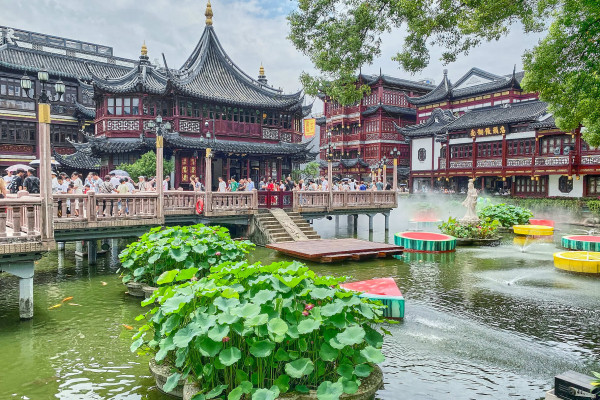
Nanxiang Steamed Bun Restaurant (南翔馒头店)
Background
Nanxiang Steamed Bun Restaurant (南翔馒头店) is renowned for its delectable Nanxiang Steamed Buns (小笼包). Situated adjacent to the picturesque Zigzag Bridge (九曲桥) and just next to the Huxin Pavilion (湖心亭茶楼), this historic eatery has a fascinating backstory. In 1900, its founder, Wu Xiangsheng, originally operated a restaurant in Nanxiang, Jiading. Recognizing the influx of temple-goers in this area, he astutely expanded his business to this location.
Soon, Wu Xiangsheng’s culinary innovation extended beyond the restaurant’s walls as he started providing his signature buns to nearby tea houses. These delightful steamed buns quickly became a favorite among tea house patrons, who enjoyed them as a perfect complement to their tea-drinking sessions. Today, Steamed Buns (小笼包) are a popular breakfast food or snack among the locals.
Specialties
Sometimes, locals call these tasty treats “Steamed Soup Buns” (小笼汤包). What makes them special is the jelly broth inside that turns into delicious soup when the buns are steamed. The dough for the buns is made carefully from different flours, and every 100 grams of it makes a tray of Xiaolongbao. These steamed buns look like cute little pagodas. Nowadays, the restaurant offers lots of different fillings to suit all tastes. It’s a common sight to see both locals and tourists waiting in line outside, lured by the amazing smell and taste.
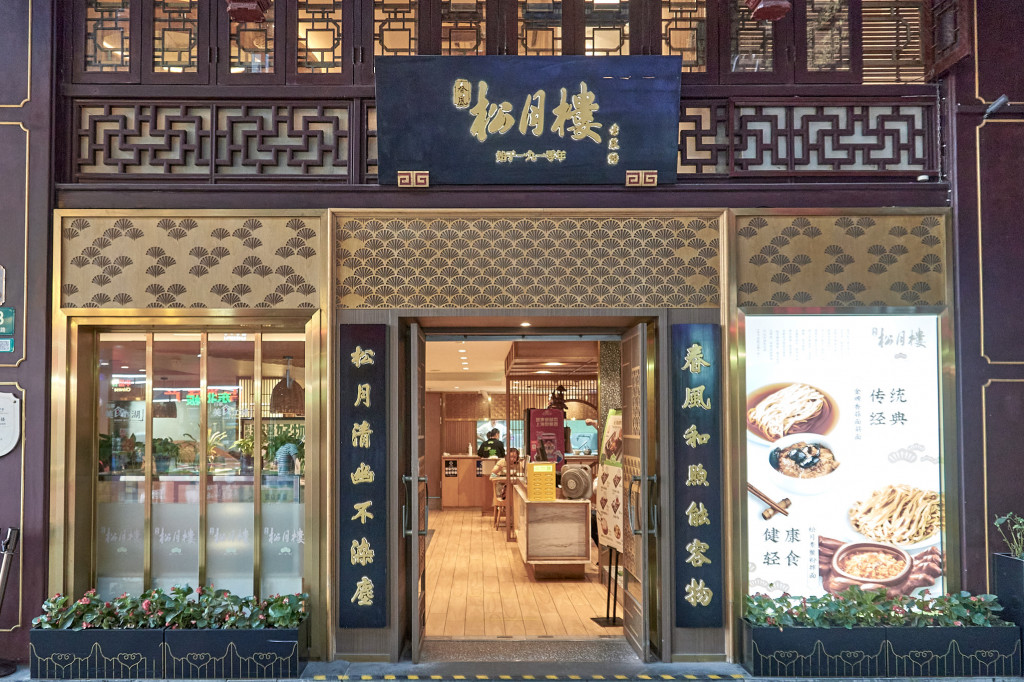
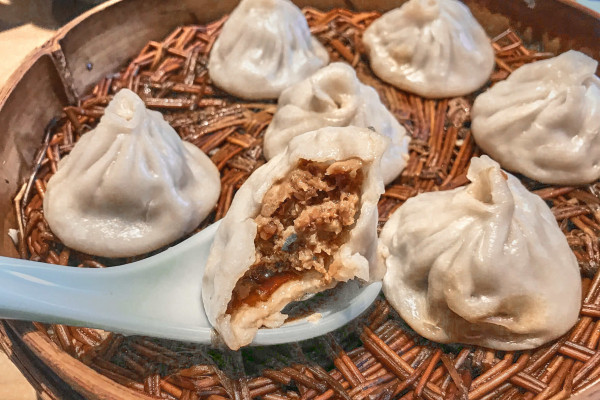
Ningbo Tangtuan Shop(宁波汤团店)
Background
Tangtuan (汤团), or Tangyuan, are the star attraction here. These little rice balls originate from Ningbo in Zhejiang Province, a place famous for its delectable cuisine. They’re a special treat often enjoyed during festivals like the winter solstice (冬至) and the Lantern Festival (元宵节), which marks the end of Chinese New Year, bringing families and friends together for a warm celebration. But nowadays, you can enjoy Tangtuan all year round, whether for a delightful breakfast, a sweet dessert, or a tasty snack to satisfy your cravings.
Specialties
The Tangtuan you find here are wonderfully round, symbolizing happiness and family unity, especially during Chinese New Year. They come in various sizes and are filled with delightful sweet and meaty surprises. One beloved filling combines rich black sesame paste with flavorful pork lard.
Lü Bo Lang (绿波廊)
Background
Lü Bo Lang is right next to the Zigzag Bridge (九曲桥). The three-story building has an architectural style of Ming and Qing Dynasties and is in harmony with the artificial lake and its pavilion. Lü Bo Lang has hosted many celebrities, such as the former US President Bill Clinton, Queen Elizabeth, Japanese Prime Minister Takeshita, Prime Minister of Iceland, and Australian Prime Minister.
Specialties
It is famous for its Shanghai-style of snacks. Its snacks are fresh, each in small size, and beautifully shaped. One of the common snacks locals like to order is Pan-Fried turnip Cake (萝卜丝酥饼). The main ingredients are grated turnips, dried shrimp, mushrooms and little spring onions. Another one is Crispy Jujube Cake (枣泥酥饼), whose main ingredient is jujube paste.
The restaurant also offers Shanghai traditional dishes. Some of its dishes use made from crab meats. The location is absolutely the best. If possible, you should try some food when you are in the area. It is one of the traditional restaurants near Yu Garden whose name is famous both domestic as well as international.
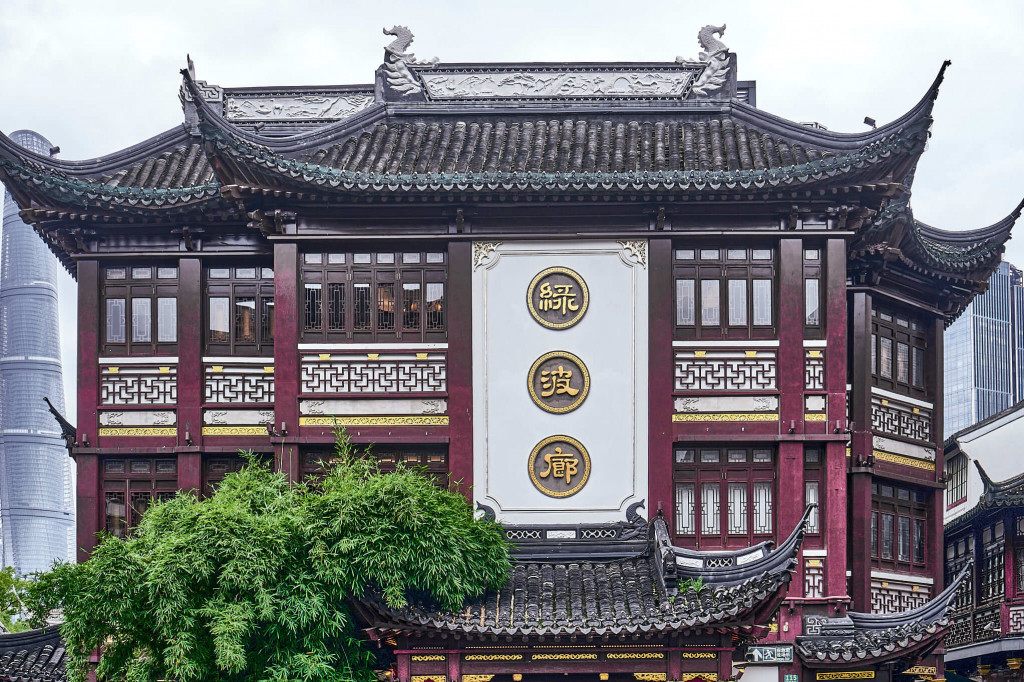
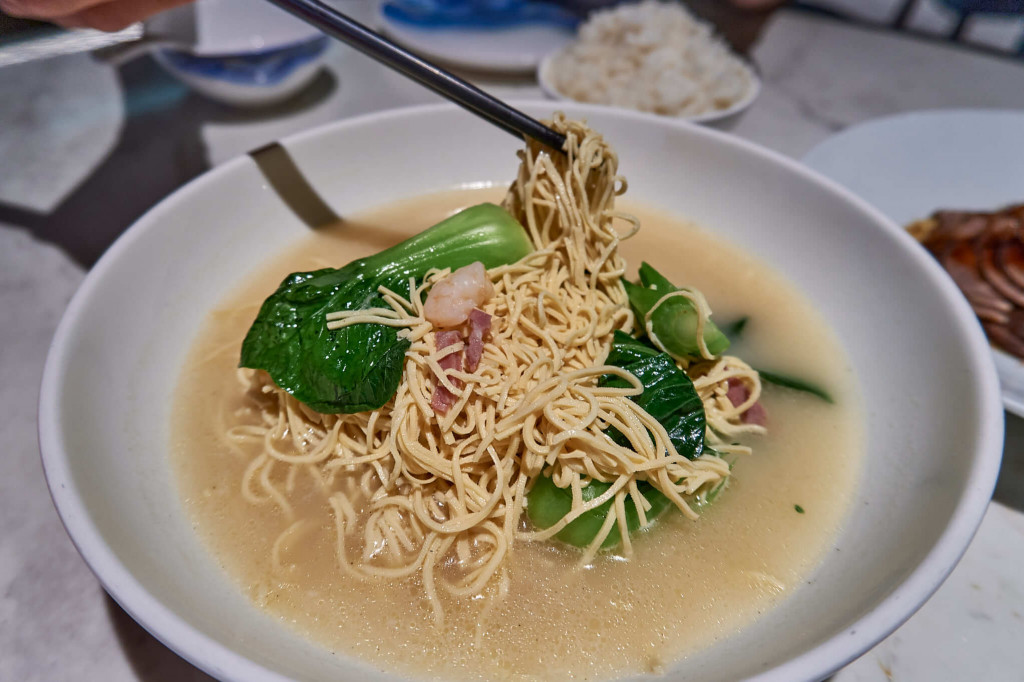
Chunfeng Songyue Lou (春风松月楼)
Background
Established in 1910, this is Shanghai’s oldest vegetarian eatery. Its founder, Xu Huijia, began his culinary journey as an apprentice, mastering the art of vegetarian cooking. With experience in hand, he ventured to open his own restaurant. Personally overseeing everything from ingredient selection to food quality and cooking, Xu’s dedication paid off as his establishment gained recognition among the city’s elites, who became devoted customers.
The dishes here feature common ingredients like tofu, mushrooms, bamboo shoots, and other garden-fresh vegetables. To mimic the textures of meat, soy protein takes the spotlight, while wheat gluten provides a chewy, meat-like consistency that’s easily tailored to suit various dishes.
Specialties
The menu here offers vegetarian versions of some classic Shanghai dishes. A standout is the Su Cai Bao Zi, or vegetarian steamed buns. Packed with a delightful blend of Shanghai green vegetables, mushrooms, bamboo shoots, flavourful bean curd, and wheat gluten, these buns offer a burst of freshness and flavour with every bite. The bun’s skin is soft and non-sticky, making the experience even more enjoyable. Not only are they budget-friendly, but they are also exceptionally delicious.
For many locals, it’s a common practice to purchase ready-made dishes for family meals at home. That’s why you’ll find a takeaway area on the ground floor. The food here is budget-friendly yet boasts authentic tastes. Upstairs, you’ll discover a comfortable seating area where you can order dishes and enjoy them right there in the restaurant.
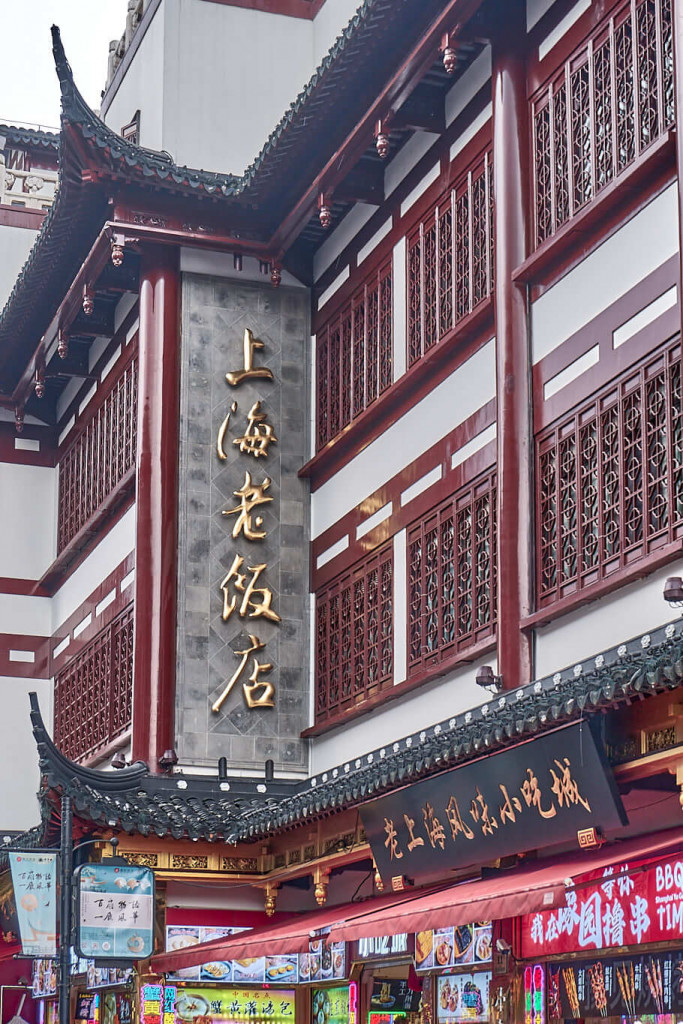
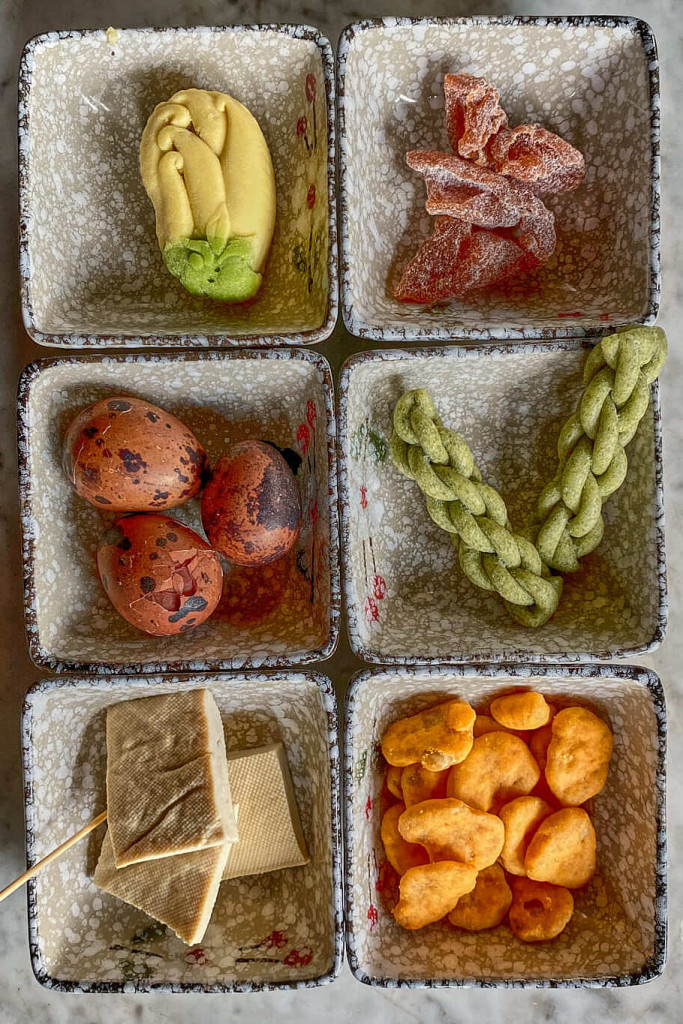
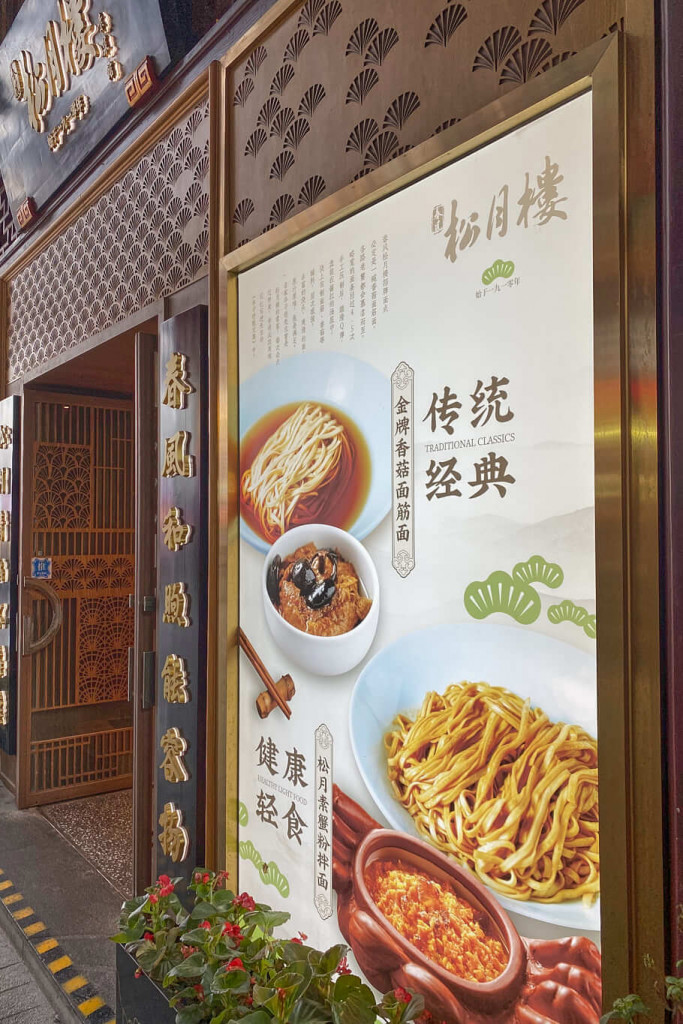
Shanghai Lao Fandian (上海老饭店)
Background
Established in 1875, this restaurant boasts over a century of rich history. Its founder, Zhang Huanying from Pudong Chuansha, originally pursued a career as a chef. In 1875, he secured a modest dwelling not far from the current location and inaugurated a quaint eatery known as Rongshun Restaurant. Zhang personally took charge of preparing the dishes, while his wife served them. Despite its modest beginnings, the restaurant featured an array of authentic Shanghainese home-style dishes. Quickly, it gained popularity within the local neighbourhood, prompting Zhang to rename it Lao Fandian (老饭店).
Specialties
Shanghai Lao Fandian is renowned for its signature dish, Ba Bao Ya (八宝鸭), or Eight Treasure Duck. This delectable duck is generously stuffed with eight ingredients: lean pork, bamboo shoots, gingko nuts, dried chestnuts, lotus seeds, dried shrimps, dried mushrooms, and jujubes. To render the duck fat, the chef fills it with glutinous rice, which absorbs the duck’s rich flavors during steaming. This culinary masterpiece is then steamed for hours, resulting in tender meat infused with the distinctive charcoal essence that signifies its signature status.
Another beloved Shanghainese classic is Flash-Fried River Shrimp (油爆河虾). This dish calls for skillful preparation, as it involves small river shrimps, vinegar, sugar, salt, soy sauce, spring onions, ginger, cooking oil, and cooking wine. The key is achieving perfectly crispy shrimp shells, which locals are adept at devouring if you can’t be bothered to remove them yourself.
Shanghai Lao Fandian prides itself on offering top-notch food quality, excellent service, and a bilingual menu. If you’re in search of affordable, authentic Shanghainese cuisine, look no further than Lao Fandian.
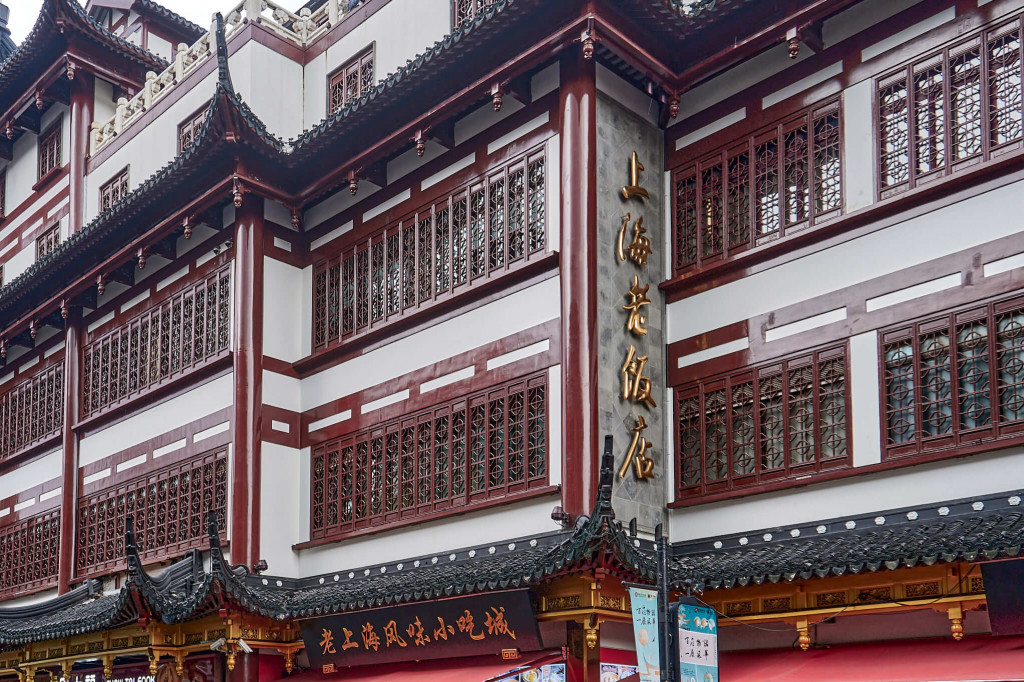

Conclusion
With every delicious bite you enjoy at these restaurants near Yu Garden, you’re not just experiencing the wonderful flavors of Shanghainese cuisine; you’re also tasting the amazing history and stories that make Shanghai so special. So, as you discover these culinary treasures, remember that each meal is like a journey through time, a way to celebrate tradition, and a taste of Shanghai’s fascinating past.
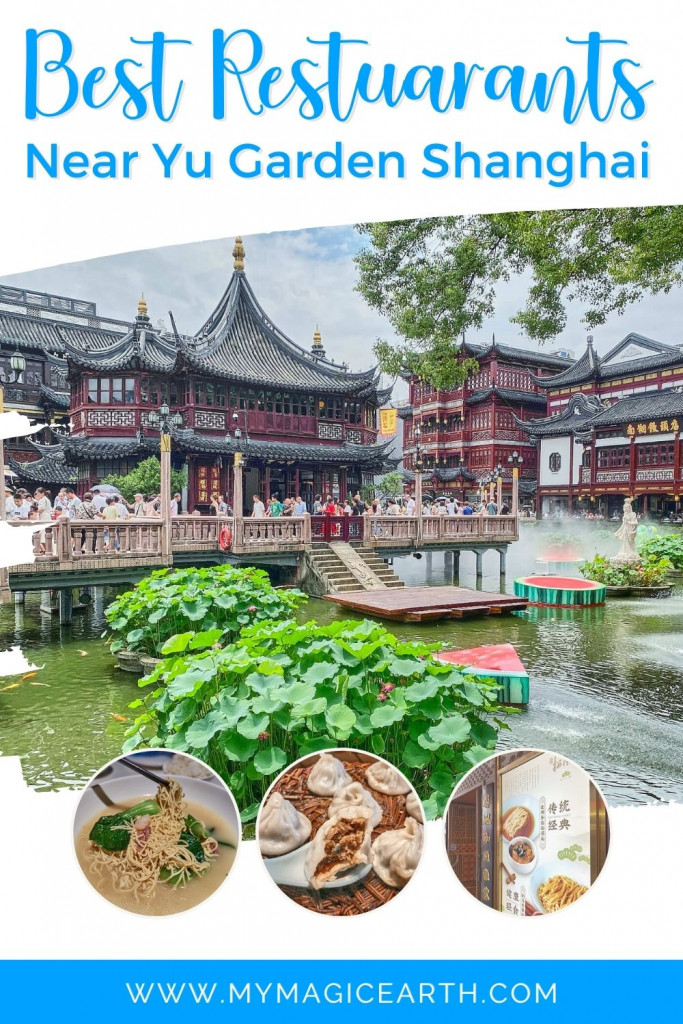
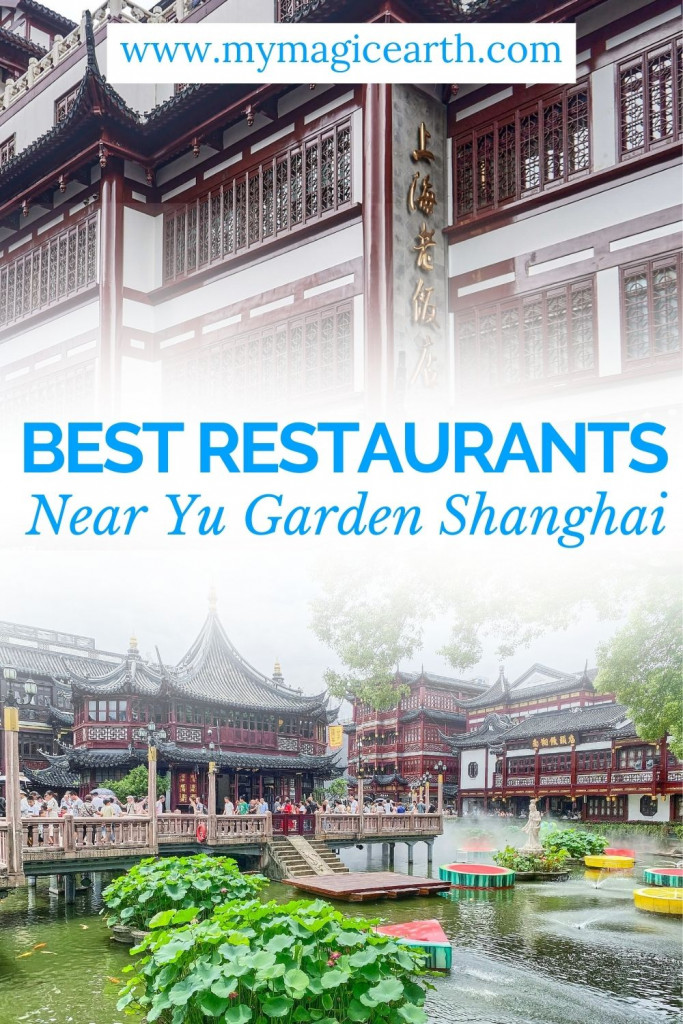
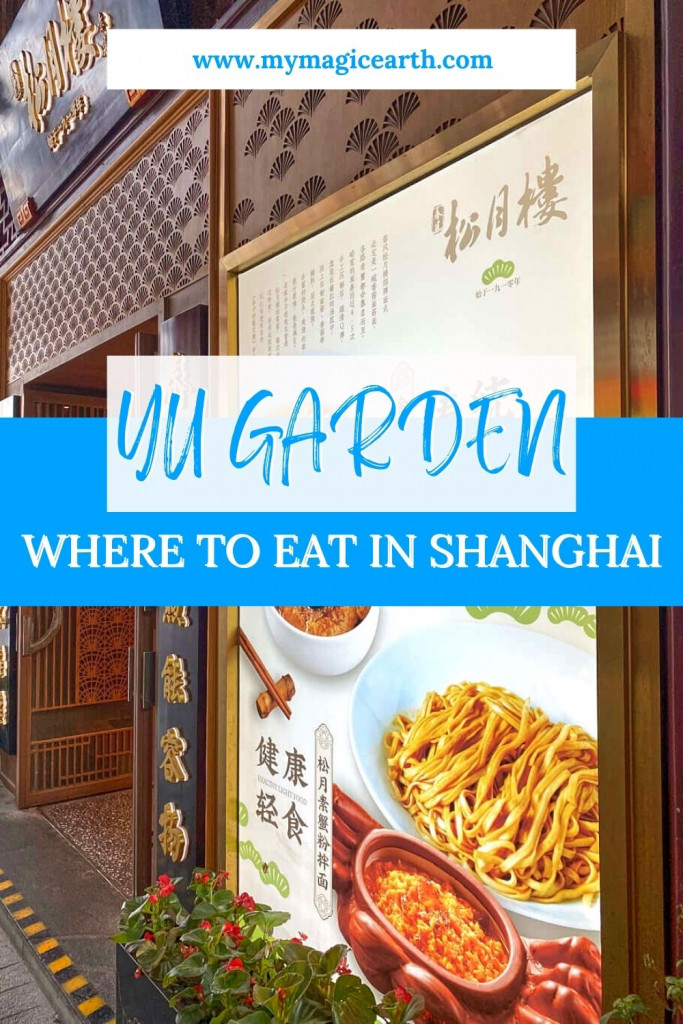

Great listicle of few of the best restaurants in Sanghai. You seem to have put somuch effort in compiling this list and I appreciate that. I specifically loved the ambiance and decor of Chunfeng Songyue Restaurant. However, all of these sound fantastic. Can’t wait to taste each of these cuisines.
What a yummy post. I like the sound of that old tea house. Always wanted to go there, especially after reading memoirs of Geisha. The soupy dumplings is something I did not know off. Quite curious to try that
This post has made me feel hungry! I love trying authentic food when I visit new places so this was right up my street. The dim sum and duck are things I definitely would sample!
I love good food and I think one of the first things I would do is join one of those food tours to get a bit of a taste of everything. Would also love Ning Bo Dumplings and the afternoon tea you described. My mouth is watering just thinking about all the amazing food options you provided.
Thank you for all your information. I am a vegetarian so was pleased to read about Chunfeng Songyue Restaurant. I always fill that I am missing out when we eat Chinese and everyone else has the steamed buns so I am looking forward to trying their vegetarian steamed buns, Su Cai Bao Zi.
I feel quite hungry now after reading this post! Shanghai is a city i’ve yet to visit, so I’m unfamiliar with Yu Garden. I really like the look of Ning Bo Dumplings, they look and sound delicious. A traditional Chinese afternoon tea at Huxin Pavilion also appeals a lot!
Definitely a post after my own heart, or should I say stomach? Lovely to read about your recommended restauants by Yu Garden, and what dishes to try at each one. From the historical Huxin Pavilion for afternoon tea, to the steamed buns (a personal favourite) of Nanxiang, to dim sum at Lu Po Lang (I’ve never tried jujube paste), to Eight Treasure duck at Lao Fandian, I want to eat at each and every one!
I have never been to Shanghai, but I will definitely ue this list when looking for the best restaurants. I particularly like the Huxin Pavilion, it sounds all so tasty! All these dishes just make me hungry while looking at them.
Great Post! I love Xia Long Bao! It is one of my favorite Chinese dishes and I could not stop eating them while there. Also Yu Yuen Garden is a great sight so this is an important guide for many people visiting.
I wish I knew these restaurants few months ago that I was in Shanghai! Especially the oldest vegetarian one – I made me walking on hot coals now haha! I like your photos and your writing too, keep going!
Thanks;)- Appreciated your reading!
Best regards,
Mijia
I love xiaolong bao and tangyuan! This post makes me miss China even more.
I love Steamed Buns! I love your list. I’ll be saving this for future reference.
Your post is simply great! Has definitely made me crave for dim sum . I like your idea of providing the addresses of the restaurants.
Hi Georgina,
Thanks! Shanghai is big and that’s why I added orientations in my post. This city has a mix of old and new culture. It is not so easy to tour around, even for those who live there;)-
Best regards,
Mijia
What an incredible list of restaurants and eateries. I’m salivating as I read this post. The Dim Sum from Lu Po Lang and Tangtuan look incredible. China is high on my list as countries to visit for food and this article has me tempted!!
All of this food has seriously made me feel so hungry. I would love to eat the dumplings and Tangtuan especially but all the food looks so good. I will be bookmarking this guide for my upcoming trip to China.
I ate these food all the years when I lived in China. I missed them so much now because the same ones outside of China doesn’t taste the same like those in China. Best regards,
Mijia
These places look so traditional. I’ve always wanted to go somewhere and just do a post about the foods I try and restaurants I visit. I will save this should I ever travel to Shanghai.
I love booking myself on food tours when I travel to new places. It gives you such a good insight into the culture. This looks like it was such a great trip. Definitely a place I’d like to visit one day.
I’ll be perfectly honest, Chinese food sort of intimidates me (like real Chinese food, not takeout from the corner shop). Not that I’m scared of trying it, but that there’s SOOO much variety! Thanks for sharing the great post – next time I go to Shanghai, I’ll have to look some of these up!
All these dishes make me hungry just looking at them. I love how the Tangyuan symbolizes happiness and unification of families. And the food tours sound amazing (and adding a foot massage is right up there with dessert!).
Nice list , very elaborate and will for sure save it for my future travels to Shanghai. Very scared to eat some things though.
Thanks, Sujenne!
I wish I had known all of these places when I visited Shanghai last year! They all sound delicious, I’m such a foodie so every time I visit a new place I do so much research on the food there. Saving this for next time!
My mouth is watering for those steamed buns already! I love the food tour ideas, such a great way to dive into the cuisine and culture. Thanks for the post!